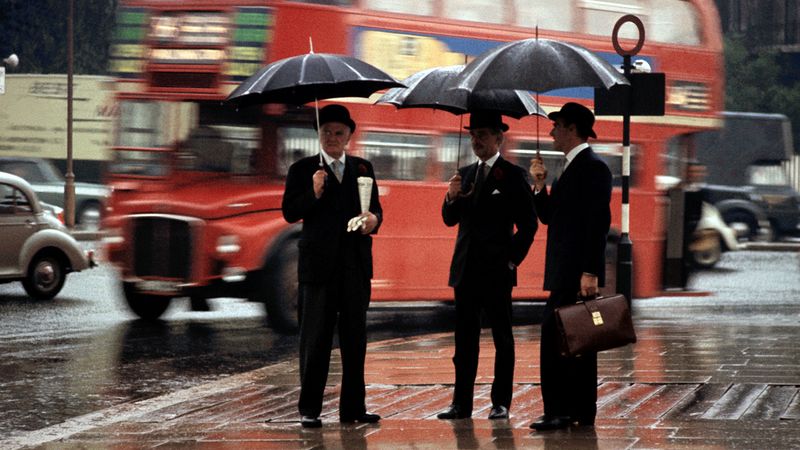THE JOURNAL

Hyde Park Corner, London, 1964. Photograph by Mr Burt Glinn/Magnum Photos
Whichever side of the Atlantic you’re on this week, you would be forgiven for being suspicious of powerful men in suits going about their business of setting the world on fire. And if there’s a sector almost as maligned as politics right now, it’s banking. Which raises the question of how to dress like a banker as we edge towards a new decade in a climate where informality is king and the rigours and mores of traditional suiting are dismissed as staid. Not for nothing did Goldman Sachs relax its stringent dress codes earlier this year, its DJ-ing CEO issuing a memo about a “flexible” mode of wardrobe that considers the “changing nature of workplaces generally in favour of a more casual environment”.
Some entirely unscientific field work proves the point. “I’m often surprised by how dress-down the culture has become,” says London-based hedge fund consultant Mr Peter Main, who maintains a more structured approach. “It’s become acceptable to wear more casual attire, but it’s a tricky line to tread because you need to have presence and authority with clients, but not look out of touch.” So with that in mind, and with a question from one of our readers on the matter, we’ve outlined exactly what a banker’s work wardrobe should look like today.
___
What to wear as a new investment banking analyst, especially with banks becoming slightly more casual?
@mattsturgell, via Instagram
___
Let’s start with that backbone of the banker’s wardrobe, the suit. The Gordon Gekkos of the 1980s and well into the 1990s had a definitive look: grey-and-black pinstripes, solid structure, strong shoulders and with some extra volume in the cut to allow for those bloated lunches at Delmonico’s or Le Caprice. Today, the modern man about Wall Street needs something much more dynamic. While a beautifully tailored bespoke suit is always going to be a thing of beauty, perhaps consider variants in technical fabrics or stretch fabrics that allow movement, or blazers in a half canvas (which means the internal back panel isn’t there) for an easier, softer feel. You might talk a hard game on the trading floor, but that doesn’t mean your tailoring has to be bullish.
Next, the shirt. The bankers of old would flock to certain Jermyn Street establishments for brash, boldly striped shirts, often with contrasting collars and a heavy dose of hardware on the cuffs. Perhaps now it’s time to venture into breezier territory in the form of a grandad-collar shirt, which looks more modern, but also lends a degree of formality. It also does away with morning tie decisions and means that, when you do opt for a classic shirt and tie, it has more presence and clout.
Consider your accessories, too. Now that Silicon Valley CEOs are co-ordinating their Arastradero hiking trail routes from their wrists, the age of the chunky gold watch is a tad gauche. Opt, instead, for a smartwatch, which shows you’re in chime with the modern digital age as you keep an eye on the FTSE 100. Likewise, the new iterations of sneakers don’t have to necessarily translate as casual. Versions in suede and leather are subtly luxurious.
If that’s a step too far into off-duty territory, consider switching up your standard Oxfords for a pair of boots. Opt for sleek and polished as opposed to outdoorsy and tuck beneath the legs of a suit to show you’re ready for pacing across the trading floor with stomping substance.